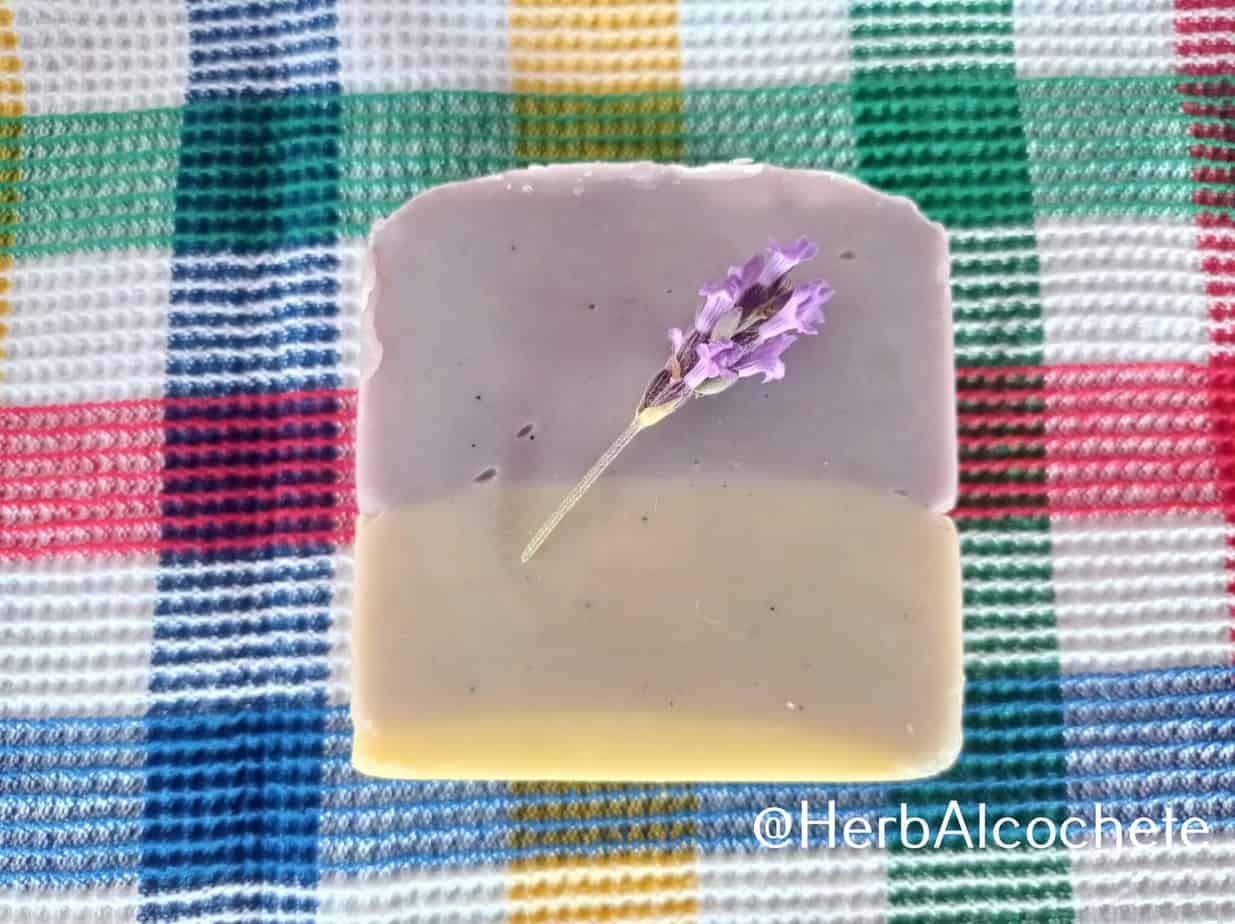Servings: 12 soap bars
Cost: $10 - $15 / 13€
Equipment
Ingredients
Lye Water
- 285 g distilled water
- 122 g lye (100% sodium hydroxide)
Oils
- 280 g refined or organic coconut oil
- 280 g extra virgin olive oil
- 280 g RSPO palm oil
- 60 g castor oil
After Trace Ingredients
- 10 drops grapefruit seed extract (GSE) (anti-oxidant)
- 2 tsp ultramarine violet (CI 77007) optional, but essential to make layers
- 28 ml essential oils blend optional
- golden mica
Essential Oils Blend
Instructions
Get Ready!
- Wear goggles and gloves! Look at “Safety Precautions” in the video above or in Soap Making Safety Precautions
- Watch the video above about "Cold Process Soap Making Tutorial" or read the post Learn To Make Cold Process Soap for instructions on cold process soap making before starting. These are generic but important steps for all recipes.

- Assemble everything: ingredients, equipment, safety equipment. Prepare your workstations. Measure all the ingredients. Don’t start the recipe without having everything ready!
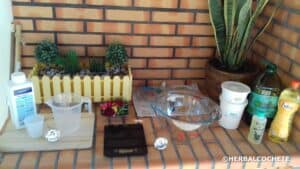
- After measuring the oil, pour 1 tablespoon of the measured oil into a small bowl. Add 1 tsp of violet mica with a bit of oil, and mix well. Pour another tablespoon of the measured oil into another small bowl and add 1 tsp of violet mica and mix well. Use a milk frother to remove clumps of mica. Put both bowls with mica aside.
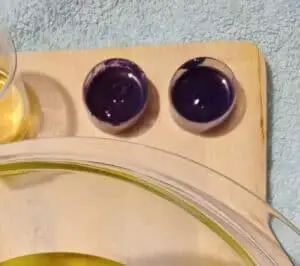
Heat the Oils
- Heat the oils until the solid oils are completely melted (it is not necessary to heat all the time).
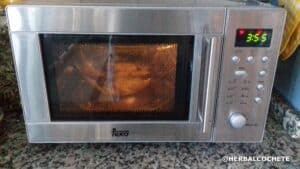
Make the Lye Water
- Make the lye solution according to How To Make Lye Water. Mix it until the vapors start to dissipate.

Make the Soap Batter
- Use as a target temperature 38ºC or even less for the oil-solution mixture. If necessary, you can reheat the oils, but not the lye solution.
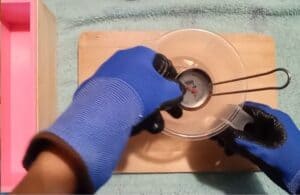
- Pour the lye water into the bowl with heated oils, carefully to not spill.

- Start mixing the soap batter with the immersion blender to reach light trace.
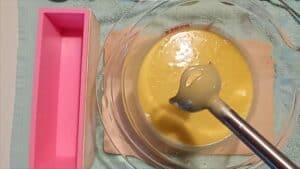
- Add the extract and essential oil (s) after trace and stir with just a spoon.
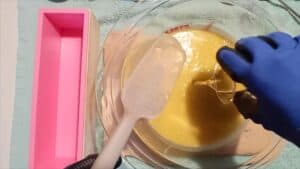
Molding and Making Layers
- Pour around 1/3 of the soap batter into the large loaf mold. This will be the botton lighter colored layer: creamy-white.
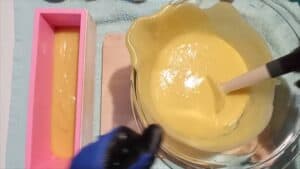
- Add one of the bowls with violet mica and oil. Mix very well and pour another 1/3 of soap batter into the large loaf mold. This will be the middle colored layer: light violet.
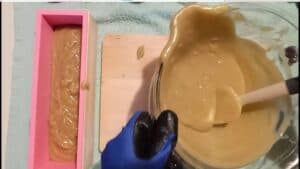
- Add the second bowl with violet mica and oil. Mix very well and pour the rest of the soap batter into the large loaf mold. This will be the top colored layer: darker violet.
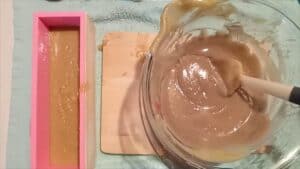
- Shake or tap gently the loaf soap mold to level the soap batter. Do some designs on the top of the soap and/or sprinkle with golden mica for decoration. This step is optional. Check out this video for several designs:
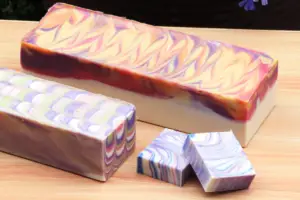
- Cover the loaf soap mold with a blanket or towel, or pre-heat the oven with 40ºC. Turn it off then place the loaf mold inside. This will prevent an uneven gel phase to happen (it causes a darker circle in the middle of soap).
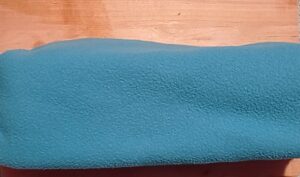
- Wait 48 hours, keeping an eye on the hardness of the soap. Then unmold your soap carefully.
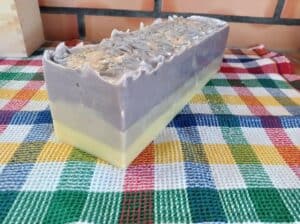
- Cut it into small bars with your soap cutter or with a knife.
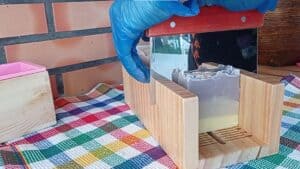
- Let the bars cure for 4 to 6 weeks. See How To Cure Soap.
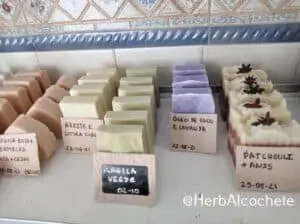
Video
Tried this recipe?Send a pic to @herbalcochete!
